Are you planning to modify your car, and you’re wondering if you can have different gear ratios for the front and rear wheels? Wonder no more, for we have researched this question, and we have the answer for you.
Yes. It is possible to have different axle gear ratios for the front and rear wheels of your car. However, the difference should not exceed the accepted range.
There is a maximum accepted deviation between the front and rear axle gear ratios to keep your transfer case safe. Learn more about axle gear ratios in the succeeding sections. Read on!
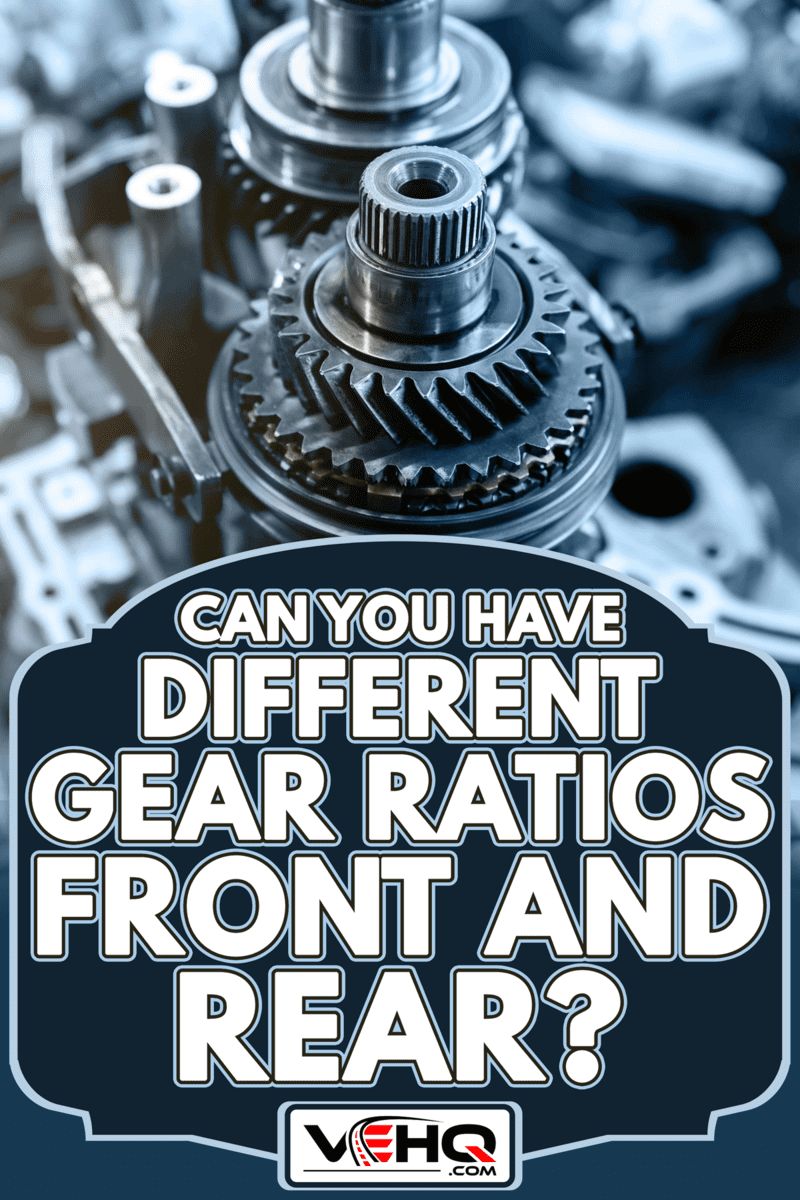
What does the axle gear ratio mean?
The axle gear ratio represents the ratio between the number of driveshaft revolutions versus one revolution of the axle. If the driveshaft makes 3.75 revolutions before the tires complete one full spin, then the axle gear ratio is 3.75:1.
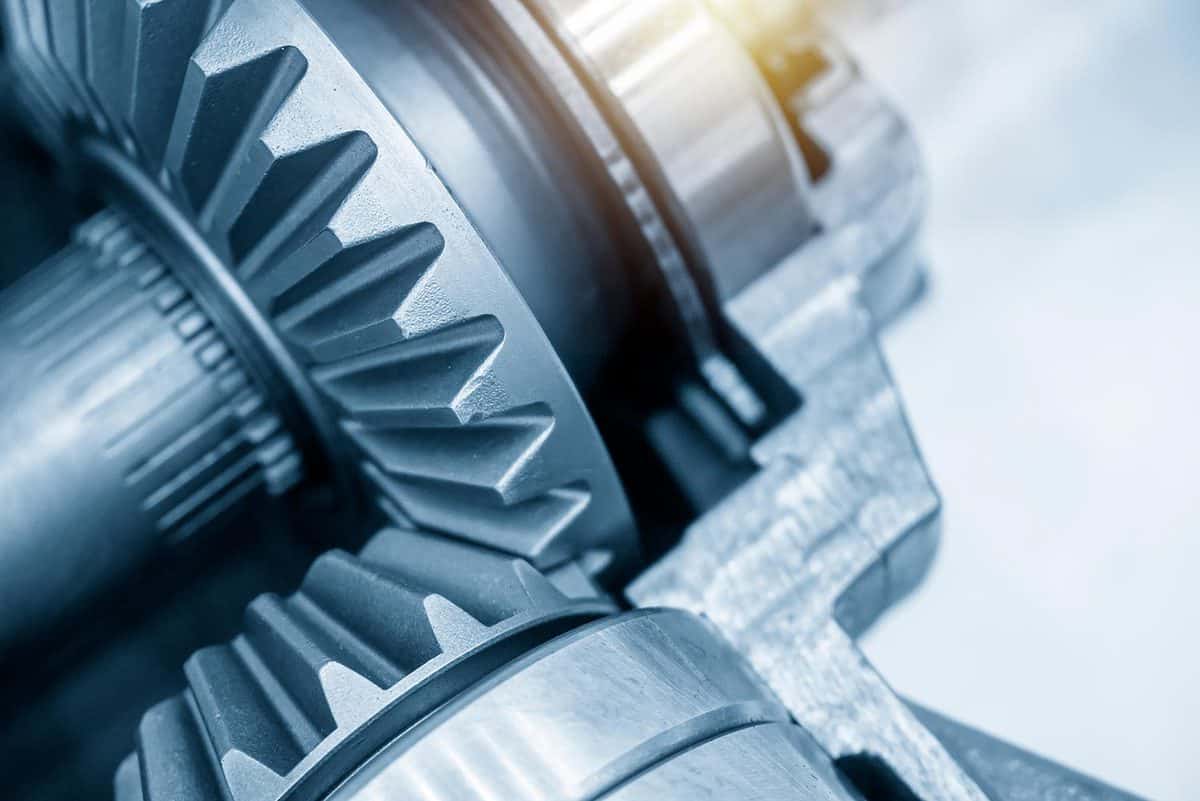
This ratio is sometimes noted as 3:75, which means the same thing as 3.75:1 or 3:75:1. The axle gear ratio is often found on a sticker on the outside of the differential.
Can you have different gear ratios for the front and rear?
Now that we’re done talking about gear ratios, let’s get back to the original question. It is possible to have different axle gear ratios for the front and rear wheels as long as the difference between the two ratios is not more than 1%.
Additionally, different front and rear axle gear ratios are safe if your vehicle can switch from a 2WD to a 4WD and you don’t plan to use the 4WD.
Another way to mitigate the difference in the front and rear axle gear ratios is to change the diameter of the front wheels and the rear wheels. The difference in the diameter of the wheels will compensate for the difference in the rotation of the axles that support the wheels.
In this kind of setup, the only purpose of having different gear ratios for the front and rear wheels is to have different sizes of wheels for the front and back.
What happens if gear ratio is too high?
A big difference in the axle gear ratio of the front and rear wheels will damage the transfer case. The transfer case is designed only to work with driveshafts that are spinning at the same speed—or very close speeds.
The transfer case will keep on trying to make the speed of the front and rear axles the same because it is one of its functions.
If the axle gear ratio between the front and the rear wheels is too big, the set of wheels rotating faster will drag the set of wheels rotating slower. Since the transfer case will keep synchronizing the speed of the wheels, dragging one of the axles will force the axle to move faster than the other.
The force produced by the dragged axle, continually spinning faster, will go against the force exerted by the transfer case to maintain the same rotational speed between the front and rear axles.
This will cause the transfer case parts to wear quickly, which eventually causes the transfer case to stop working. If the vehicle runs at high speed when 4WD engages, the transfer case could break a joint or axle or damage the driveshaft.
What is a transfer case?
The transfer case is the part of a drivetrain of a 4WD or an AWD. It is also present in vehicles with multiple powered axles. It is in charge of transmitting the power from the transmission to the axles. One of its functions includes synchronizing the rotation difference between the front and rear wheels.
When are different gear ratios used?
Trucks that are used for mud racing have front and rear axle gear ratios with a large difference. These trucks need to have a fast front set of wheels to keep themselves in front of the mud while the rear wheels rotate slower to provide pushing support.
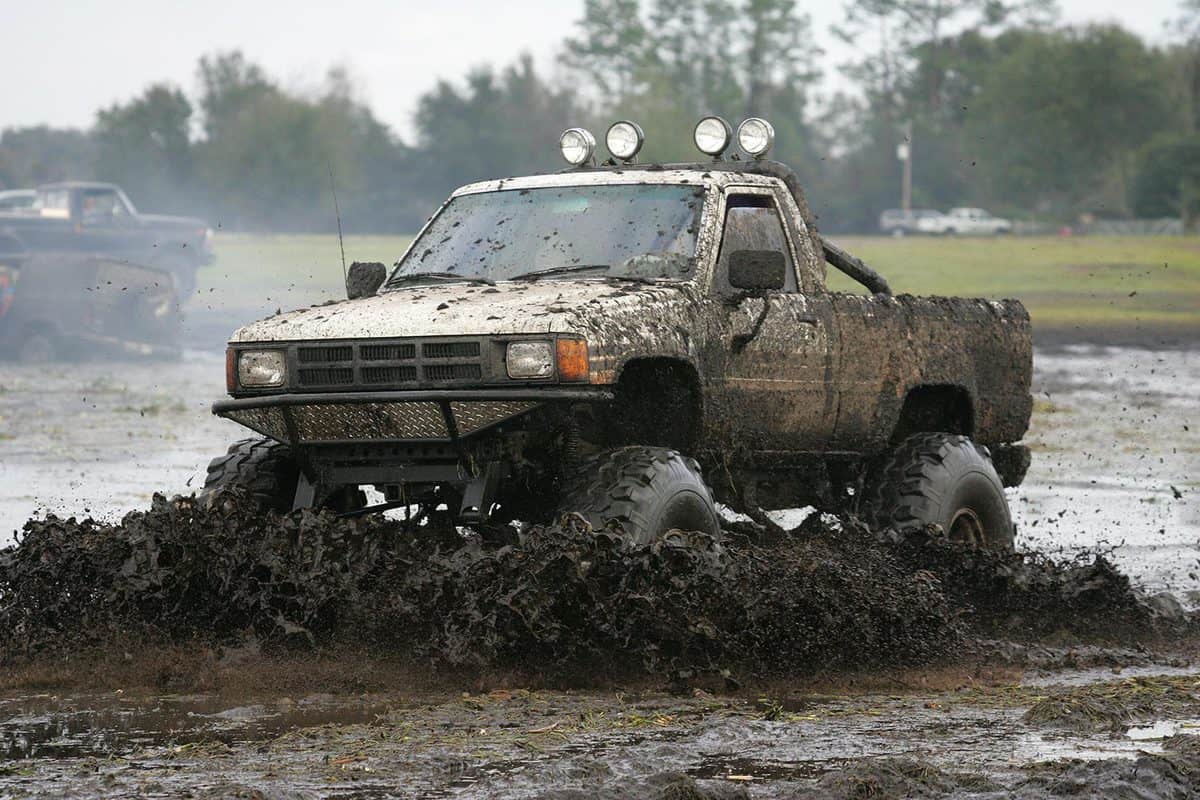
The same idea is used for vehicles racing on ice or snow.
Do Gear Ratios Make A Difference?
Modifying the axle gear ratios changes the corresponding revolutions from the driveshaft to the axle and the wheels.
- Lower gears—which translates to a larger ratio—will increase the rpm and acceleration of an engine at the cost of lower fuel efficiency.
- Higher gears—which translates to a smaller ratio—will improve fuel efficiency but provide a lower acceleration.
Changing the axle gear ratios will allow you to finely tune your vehicle to the work that it does. Check out the common gear ratios below for trucks and which are ideal for a truck's workload.
The 3.73 gear ratio
If you’re often hauling heavy cargo along a flat road, then using the 3.73 gear ratio is perfect for your truck. This gear ratio will allow your vehicle to reach cruising speed on a highway and give you better fuel economy when driving long distances.
The 4.10 gear ratio
Like the 3.73, the 4.10 is great for hauling heavy cargo. The 4.10 will cause your truck to consume more fuel, but it is useful for hauling cargo on inclined roads. It can accelerate your truck faster, even with a heavy load on flat roads.
The 3.42 gear ratio
This gear ratio is an all-around blend of efficiency and towing power. It is commonly found in many Sierra 1500 models.
Does gear ratio affect horsepower?
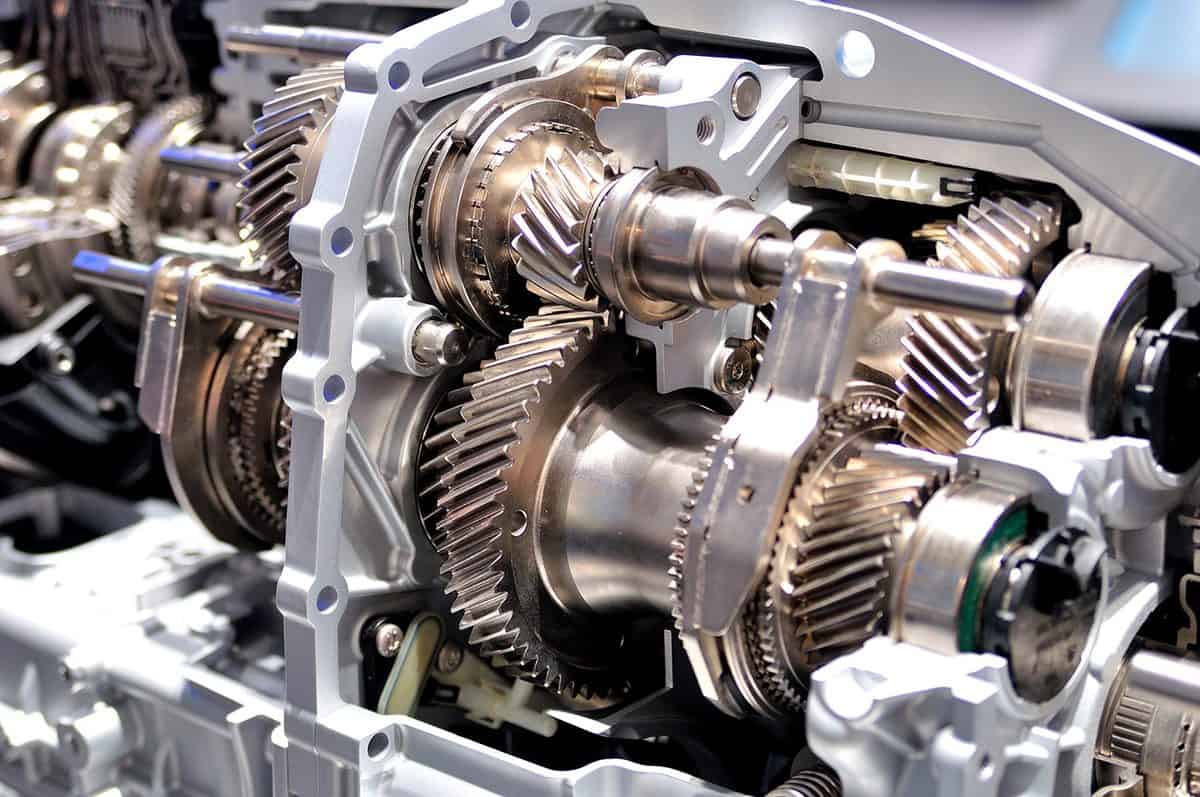
An engine's horsepower is the measure of power that an engine produces. Gear ratios do not affect the total horsepower produced. The gear ratio simply transfers the horsepower from the engine to the wheels.
For example, a higher axle gear ratio allows the engine to constantly run at the upper range of its horsepower output at the expense of fuel economy.
A lower gear ratio will run at cruise speed with a low engine rpm, improving fuel economy.
Does wheel size affect gear ratio?
The diameter of the tires affects the final drive ratio. This is the transmission gear ratio multiplied by the axle gear ratio. Final drive ratio directly influences a car's acceleration and overall performance.
Thus, a transmission with a 2.48 first gear ratio and an axle ratio of 4.10 will have a final first gear drive ratio of 10.17. When a tire’s diameter changes, the engine rpm will also change at a given speed.
Engine RPM and tire formula
Let’s use this simple formula to illustrate how tire diameter can change the car's performance. We will use the following values—55 mph, 4.10 final gear ratio, 30-inch tire diameter—and enter them into the formula below:
- RPM = (mph X final gear ratio X 336)/tire diameter
- RPM = (55 X 4.10 X 336)/30
- RPM = 2525.6
If we replace the 30-inch tire with a 25-inch tire and recompute the values of the formula, we will get:
- RPM = (mph X final gear ratio X 336) / tire diameter
- RPM = (55 X 4.10 X 336) / 25
- RPM = 3030.72
As we can see from the change resulting from the formula above, decreasing the tire's diameter gives us a higher RPM which reflects the overall change in the car’s performance.
Can high RPM damage the engine?
High RPM can cause damage to a transmission that was not made to handle it.
Constantly driving your car at high RPMs adds additional wear and tear on the bearings and oil seals of the engine. This leads to earlier fluid breakdown.
How to drive more efficiently?
Here are some fuel-efficient driving techniques regardless of the gear ratio. Knowing and doing each one will help save you money on fuels.
Gentle acceleration
You consume more fuel when you accelerate hard. Save fuel when driving in the city by waiting for 5 seconds before you accelerate your vehicle from a complete stop.
Maintain a steady speed
Suddenly dipping the speed and then flooring the gas pedal of your vehicle will force it to consume more fuel. Studies have proven that a constantly changing speed every 18 seconds or so can increase fuel consumption by 20%.
Consider using cruise control—if your vehicle has one—especially on highways.
Avoid very high speeds and very low speeds
Most vehicles are at their most fuel-efficient when traveling between 30 to 50 mph.
Going above this speed range forces the vehicle to consume more fuel as it increases its speed above 50 mph. Traveling below 30 mph for extended periods also consumes more fuel because your vehicle is forced to use the high ratio gears.
Anticipate traffic
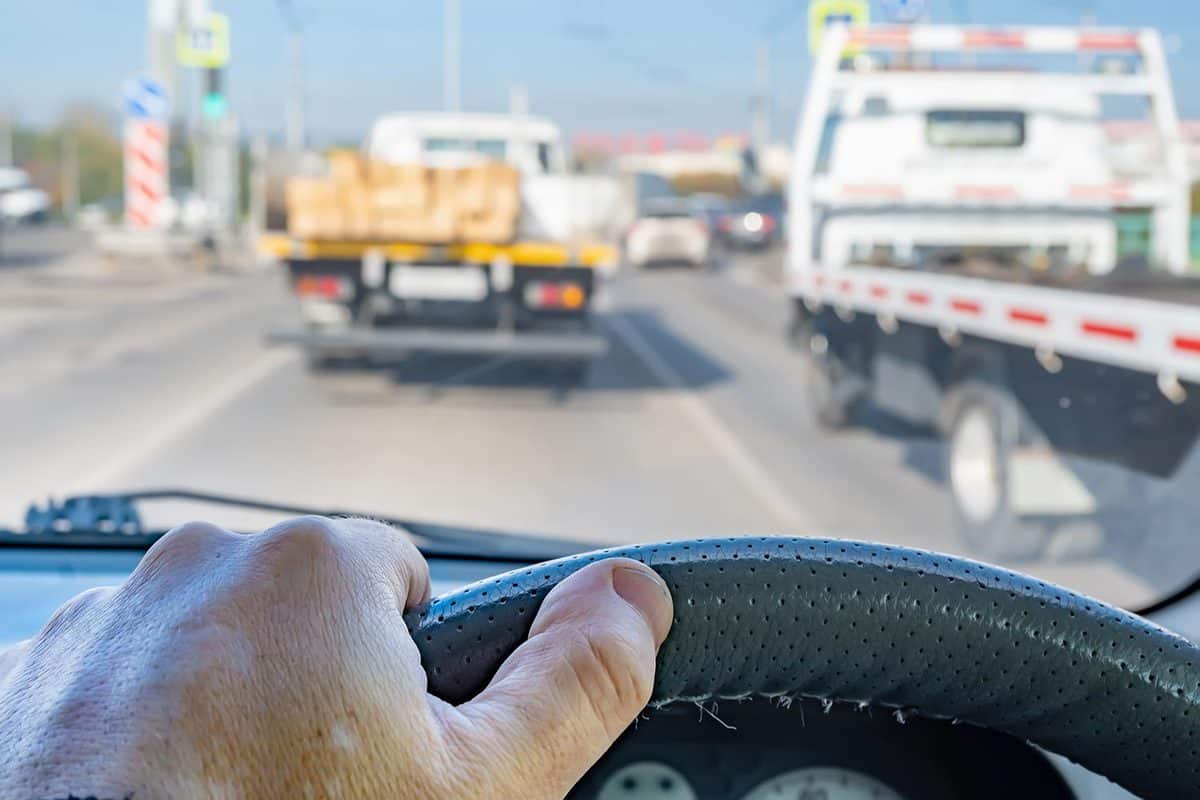
Looking ahead and anticipating what’s ahead of you will allow you to control when to step on the gas and brakes.
For example, you see pedestrians crossing the street a few hundred feet ahead of you. Instead of stepping on the gas, you can let go of the gas to let your car slow down a little on its own before stepping on the brakes.
Similarly, if you know what’s ahead, you can decide not to step on the gas if you will stop anyway in a few seconds.
Conclusion
There are very few situations where a different front and rear gear ratio is useful and wouldn’t damage the transfer case. However, in road driving conditions, it is best to keep gear ratios the same for the front and rear.
If you enjoyed reading this article, you might find the articles below equally interesting:
